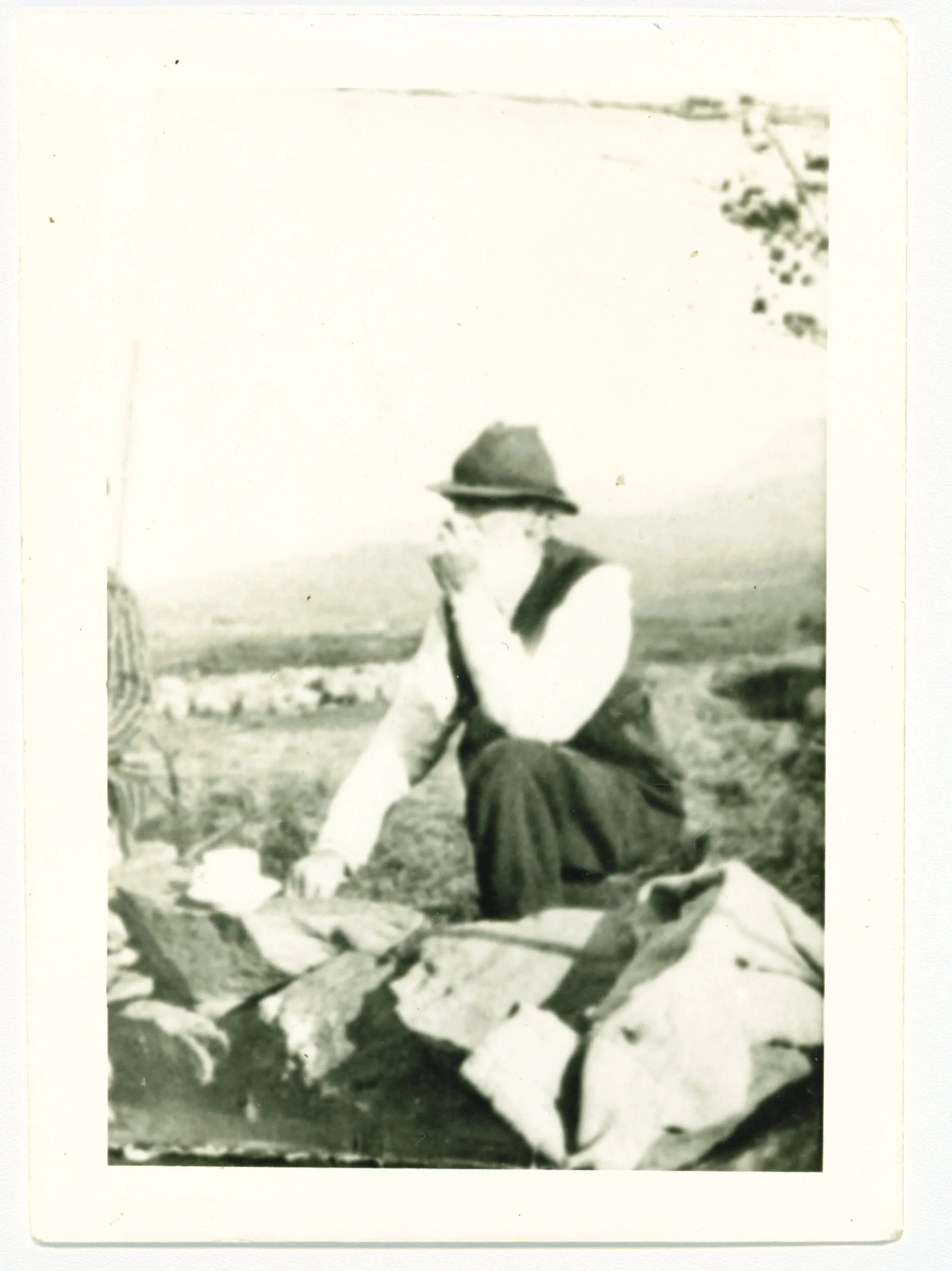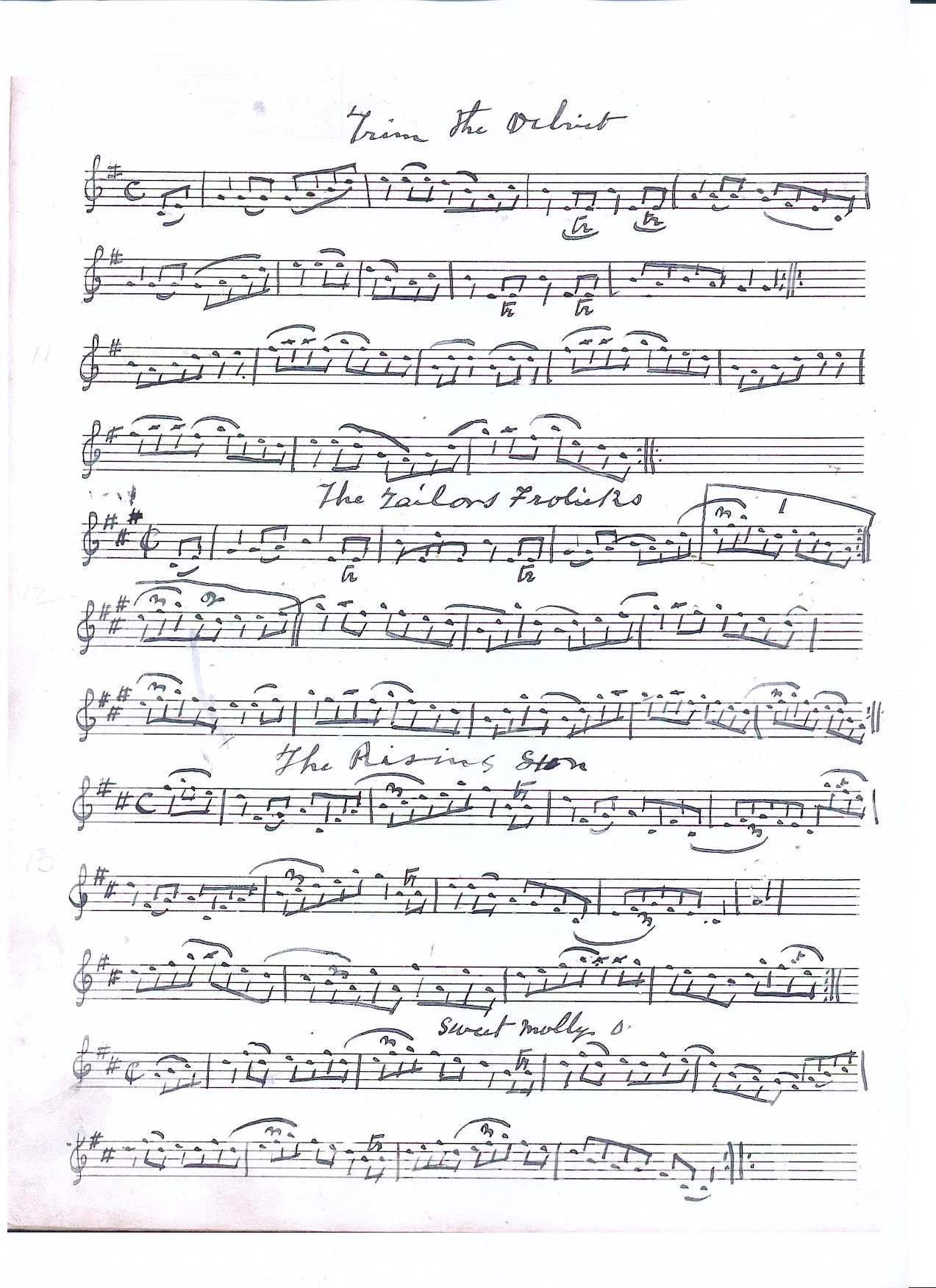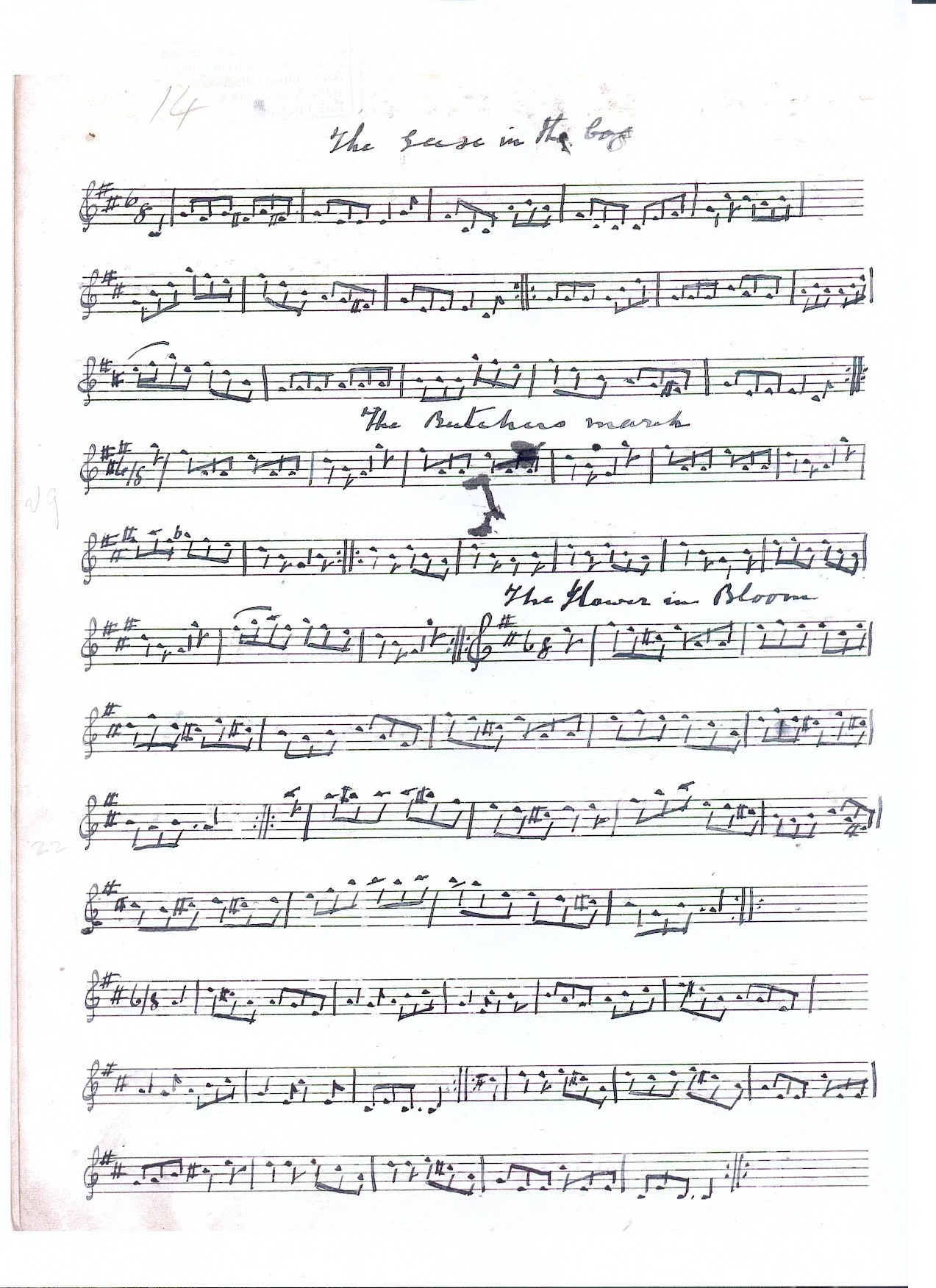
The Eugene O’Sullivan Manuscripts
Eugene O’Sullivan (Moulcore)
Ar an gComhad, soir ó Chathair Dónall a rugadh agus a tógadh Eugene Ó Súilleabháin “Suíod” mar a thugtaí ar a mhuintir. Thug Eugene na blianta ag obair do Major Butler sa Choireán. Bhí stáblaí ag Butler thoir i Meall Corr an uair sin. Do thug Butler tigh agus talamh ann do Eugene Ó Súilleabháin nuair a bhí an bóthar soir trí Bhealach Oisín á dhéanamh.
Ceoltóir den scoth ab ea Eugene. Bhíodh sé ag cumadh agus ag múineadh ceoil chomh maith. Do thagadh mórán chuige ag foghlaim an veidhlín. Bhí seisear iníon agus mac amháin aige. Bhí cáil ar Eugene mar gheall ar a chuid ceoil agus do bhíodh bailitheoirí móra, Fionán Mac Coluim agus Pilib Ó Laoghaire ina measc, ar cuairt chuige go rialta. Tá sé curtha in uaigh a mhuintire i dTeampall an Chomhaid.
Eugene Ó Súilleabháin “Suíod” as his family were known was born and raised in Comhad, east of Caherdaniel. Eugene spent many years working for Major Butler in Waterville. Butler had stables in Meall Corr near Lissatinning bridge at that time. Butler gave Eugene Ó Súilleabháin a house and land there when the road east through Bealach Oisín was being built.
Eugene was an excellent musician. He also composed and taught music. Many came to him to learn the violin. He had six daughters and one son. Eugene was renowned for his music and major collectors, including, Fionán Mac Coluim and Pilib Ó Laoghaire, visited him. He is buried in his family’s grave in the Comhad Church.The location of Eugene O'Sullivan's residence was at the junction of the road from the Bealach Oisín to Cahersiveen and Waterville, This was a primary trade route at that time. His reputation as a musician and location encouraged many a tradesman, journeyman or traveller to call to the house. One of the tunes he played was 'The Job of Journeywork'. The family history tells that the travelling piper, dance master and poet Cotter na gruaige often stayed at the house. Paddy 'Moulcore' O'Sullivan recalls his grandfather talking about Micí 'Cumba' O'Sullivan, the renowned blind piper of Castlecove visiting the house. In 1930, a year before Eugene’s death, Fionán Mac Coluim took Pilib Ó Laoghaire to meet eugene and he transcribed the air ‘ Gol na mban san ár' from him. The tunes transcriptions Pilib made on this day are lost and have yet to be located in archives if they still exist. Eugene had the ability to transcribe music and wrote a number of manuscripts. The importance of this music should not be underestimated. It was the music of the area that pre-dated commercial recordings and radio. It is a direct link to the older piping tradition of the area. In 1926 these manuscripts of music and song airs came into the possesion of Father O'Reilly who was the Parish Priest in Waterville at that time. He was a collector himself and it was Father O'Reilly who first encouraged Seán Ó Súilleabháin, who in 1935 became archivist of the newly established Irish Folklore Commission, to begin collecting. Eugene died in 1931 and the manuscripts remained in the possession of Father O'Reilly. Over time the knowledge of where the manuscripts where was lost. Some of Eugene's repertoire remained in the memory of His children, Particularly his daughter Treasa, and his grandchildren Eugie and John. Around 2005 Professor Ríonach uí Ógáin came across one of the music manuscripts amongst Séamus Ennis’s papers. At the time she was conducting work on the diaries of Séamus Ennis, the celebrated musician who worked as a folk music collector with the Irish Folklore Commission 1942-1947. This manuscript contained seventy four tunes. On reading the entries in the diaries that refer to the manuscripts, there was mention of other styles of tunes and a reference to song that was not in the manuscript that had been discovered. In late 2024 Professor Ríonach uí Ógáin and Peter Mullarkey uncovered more of the Eugene O'Sullivan material. Séamus Ennis had transcribed the original manuscripts and these copies were found. Another forty tunes and a song were uncovered. A letter from Father O’Reilly dated 28th June 2025, was also found in the archive that explains how the manuscripts came into the possesion of Séamus Eniis via Seán ÓSúilleabháin. O'Reilly had sent the books to asking what Ennis's opinion on them and asking for their safe return some time in the future.Examples of Eugene O’Sullivan’s Original Manuscript
Example of Séamus Ennis Copies
Below are a selection of tunes that have been transcribed by Binneas from the Original Eugene O’Sullivan Manuscripts. As additional funding and support becomes available the rest will be transcribed








